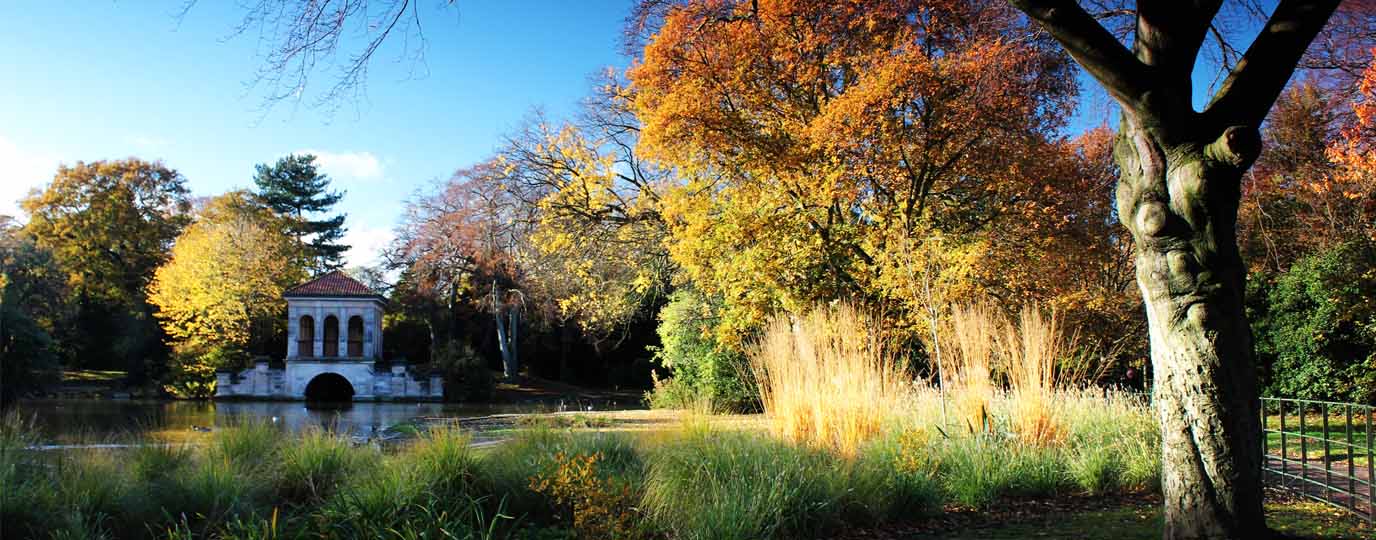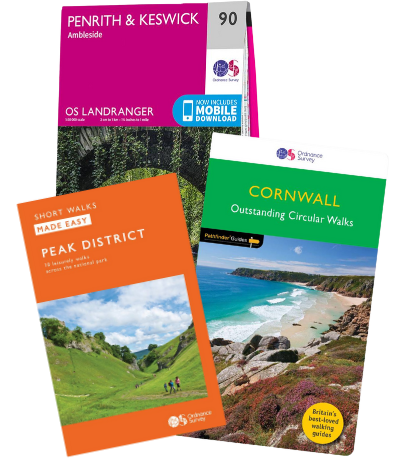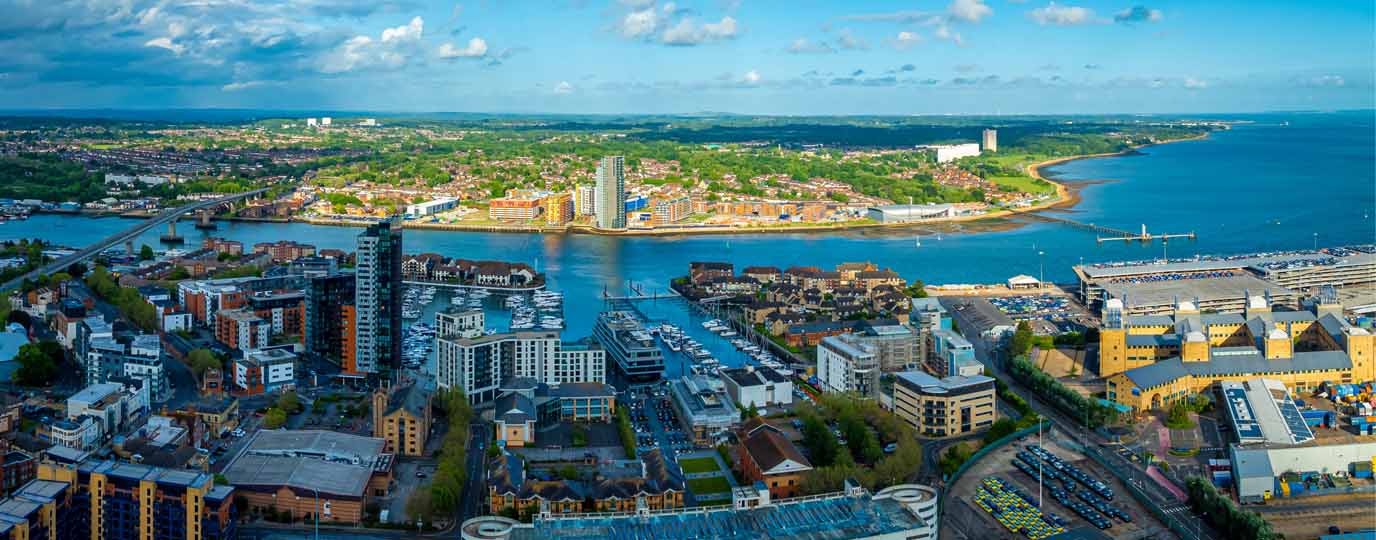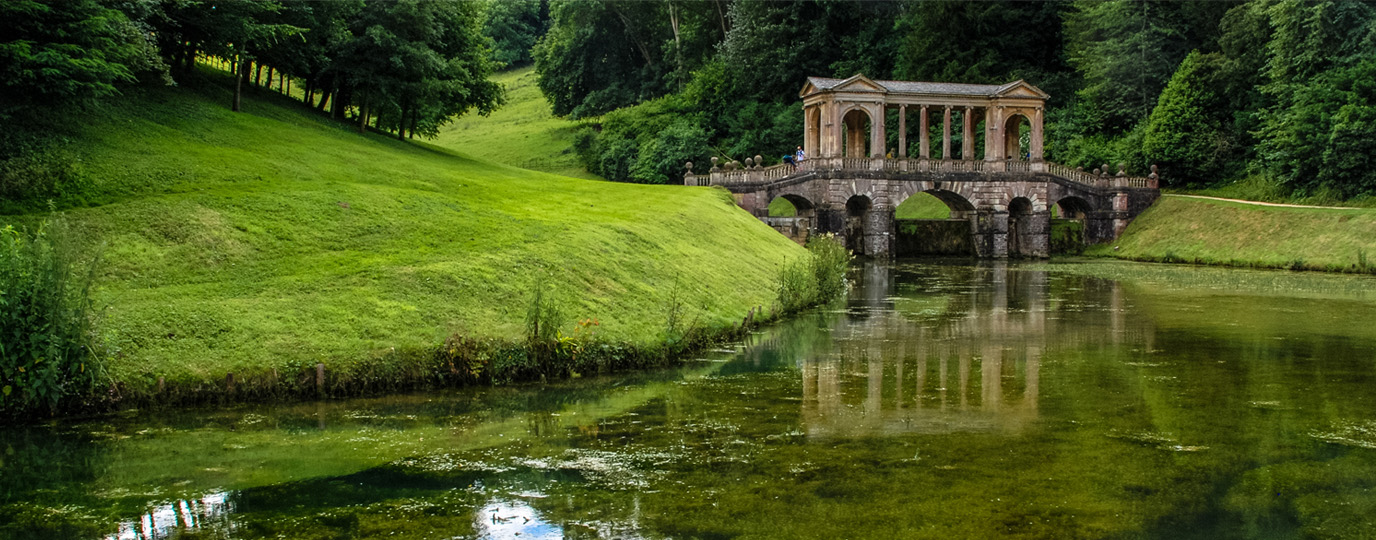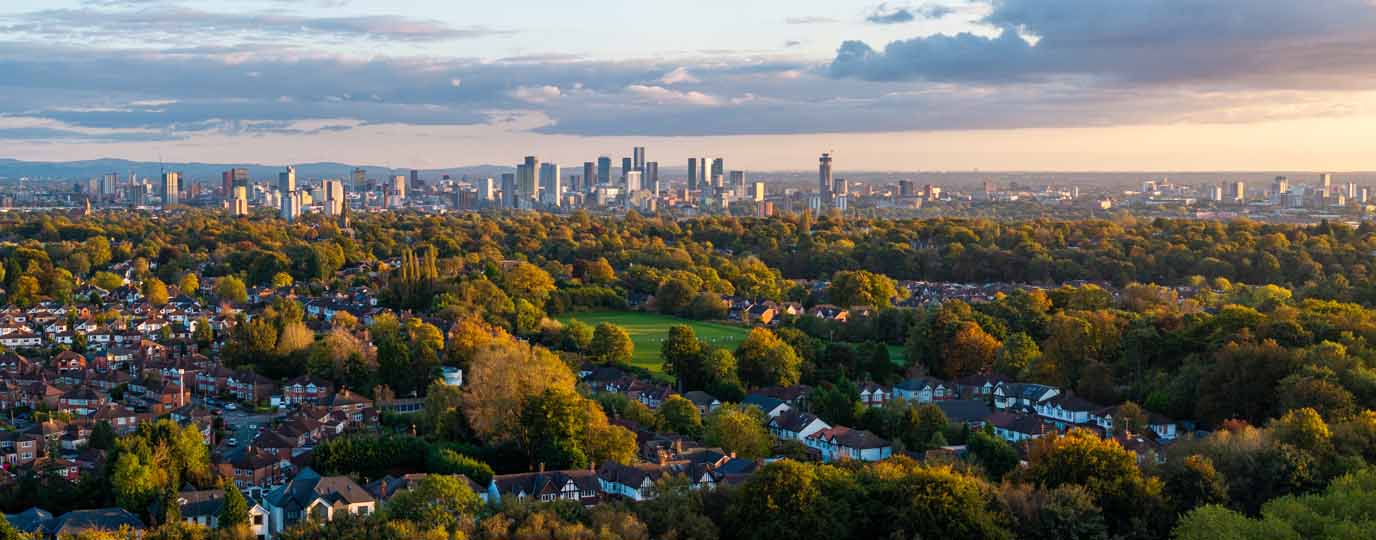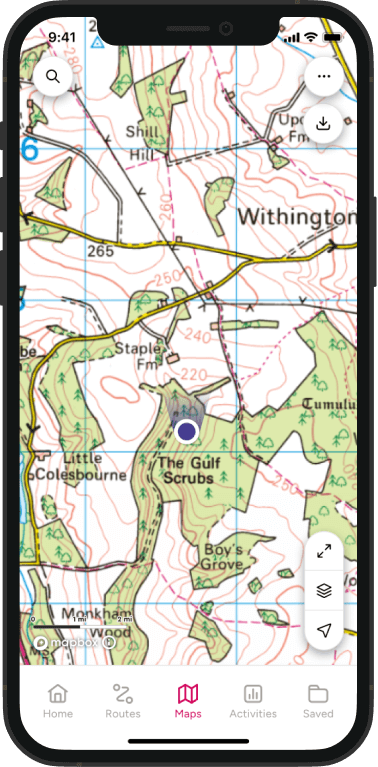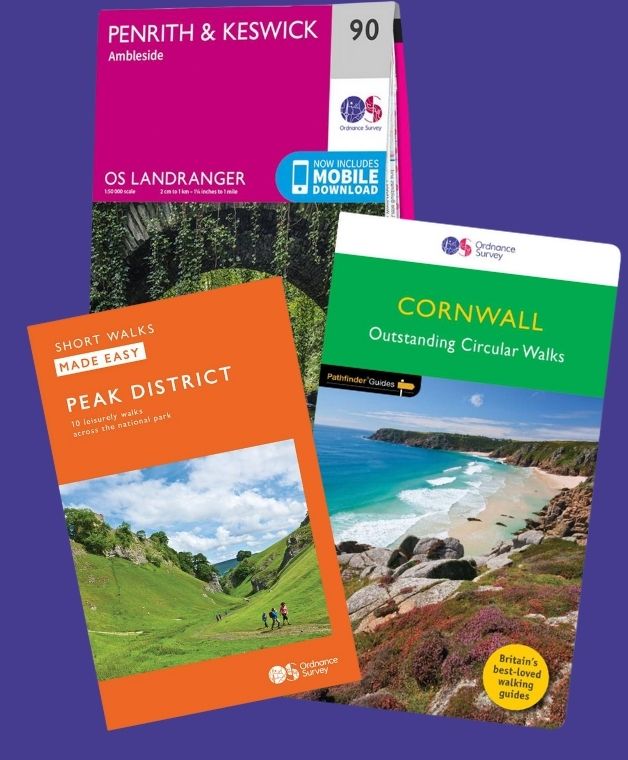Nature Within Reach of Liverpool
Walking through Liverpool reveals more than just the city’s iconic architecture and vibrant streets, it opens the door to a variety of green spaces and natural retreats. From riverside promenades to peaceful parks and leafy woodland trails, the city and its surroundings offer countless opportunities to stretch your legs and enjoy the outdoors.
Whether you’re seeking a quick lunchtime loop or a weekend wander, Liverpool’s urban nature is never far away. Our collection of natural escapes are all within an easy walking distance or a bus or train ride away.
If you’re unable to visit Liverpool, for similar walking inspiration in and around other city centres, take a look at other locations in our city walks series. Below are a few of the cities included in our series:
Where are the best city walks in Liverpool?
Lunt Meadows Nature Reserve
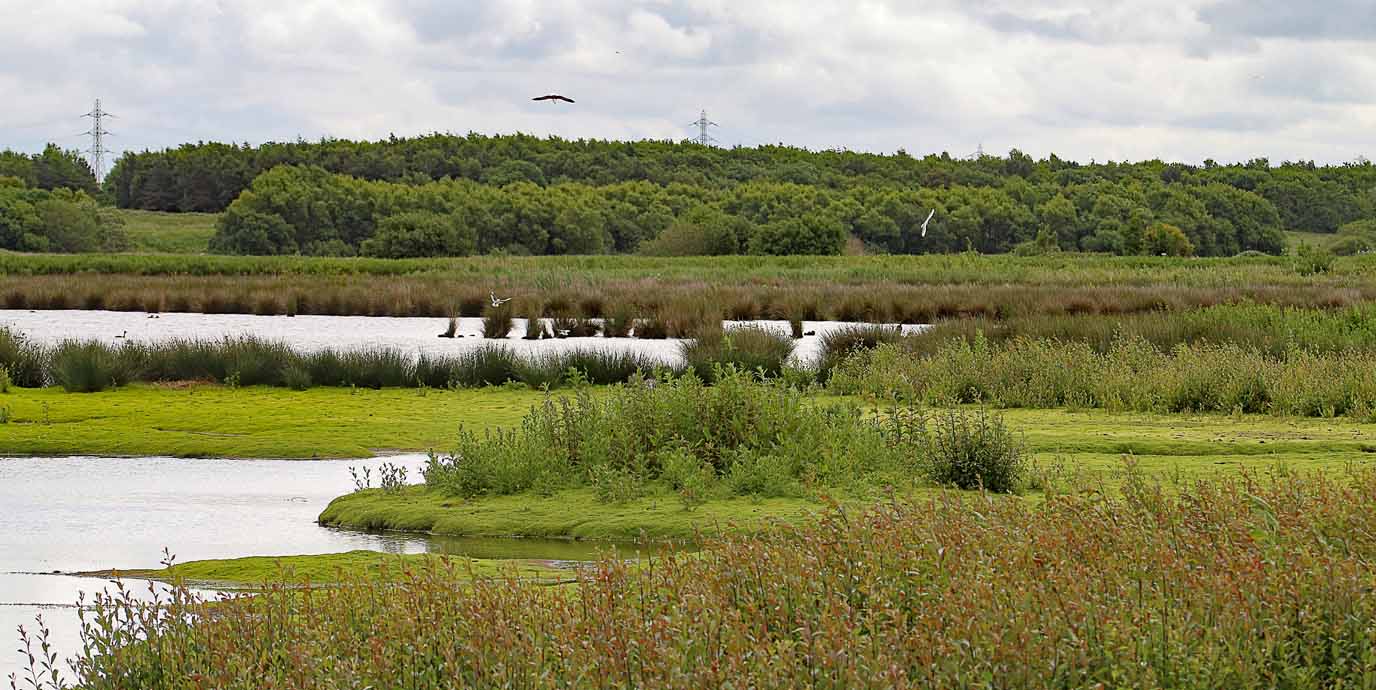
Nearest bus stop: Back Lane
Nearest train station: Maghull
Nestled in the floodplain of the River Alt, the Lunt Meadows Nature Reserve serves a dual purpose: it’s both a flood storage reservoir and a thriving nature reserve.
The landscape is a mosaic of marsh meadows, reed beds, and ponds, offering a rich habitat for wildlife. Birdwatchers can spot barn owls, lapwings, marsh harriers, and migratory species like wild geese and goldeneyes throughout the year. Water voles also make their home here, and sightings of roe deer and rare pollinators like leafcutter bees add to the reserve’s appeal. The wetlands play a vital ecological role, absorbing excess rainwater and storing carbon, making it a living example of urban nature supporting climate resilience.
You can explore the reserve via a network of walking trails, including a routes that meanders through fields, woodland, and alongside the River Alt. While some paths are accessible, others are unsurfaced and may be muddy, so sturdy footwear is recommended. Bird hides and information boards enhance the experience, and dogs are welcome on leads.
Croxteth Hall and Country Park
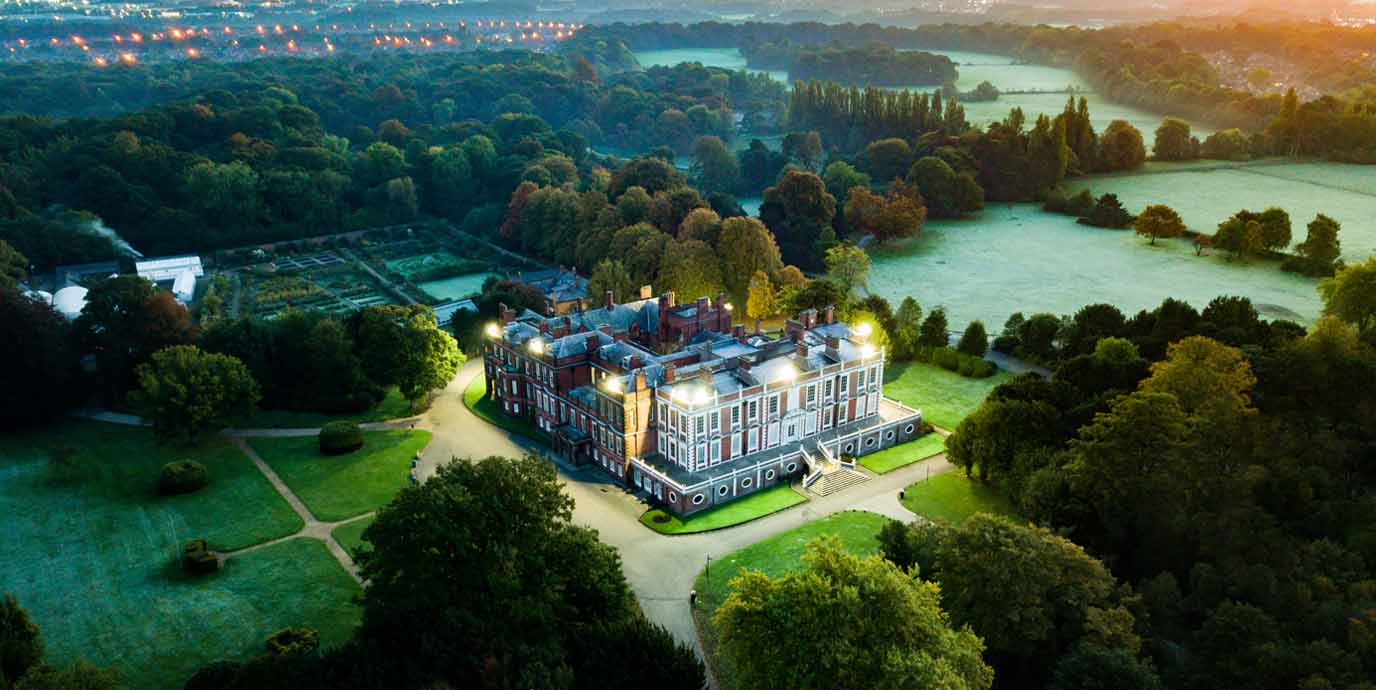
Nearest bus stop: Croxteth Hall Lane (North West), Meadow Lane (South)
Nearest train station: Wavertree Technology Park
Set within over 500 acres of historic parkland in Liverpool’s West Derby suburb, Croxteth Hall and Country Park offers a rich blend of nature and heritage for a city walk.
The grounds feature a diverse landscape of woodland, grassland, pasture, and tranquil ponds, making it a haven for wildlife and a prime spot for birdwatching. Mull Wood, located within the park, holds the distinction of being Liverpool’s first designated nature reserve. You can explore a network of walking trails that wind through these varied habitats, with routes suitable for all skill levels. From short circular strolls to longer, more immersive hikes through quieter wooded areas and open fields, there’s something to suit everyone.
At the heart of the park stands Croxteth Hall, a Grade II listed building dating back to the 16th century. Once the ancestral home of the Molyneux family, the Earls of Sefton, the hall is preserved in its Edwardian state and open to the public for guided tours. The estate also includes a Victorian walled garden, a working farm, and a miniature railway, adding to its appeal for families and history enthusiasts alike
Calderstones Park
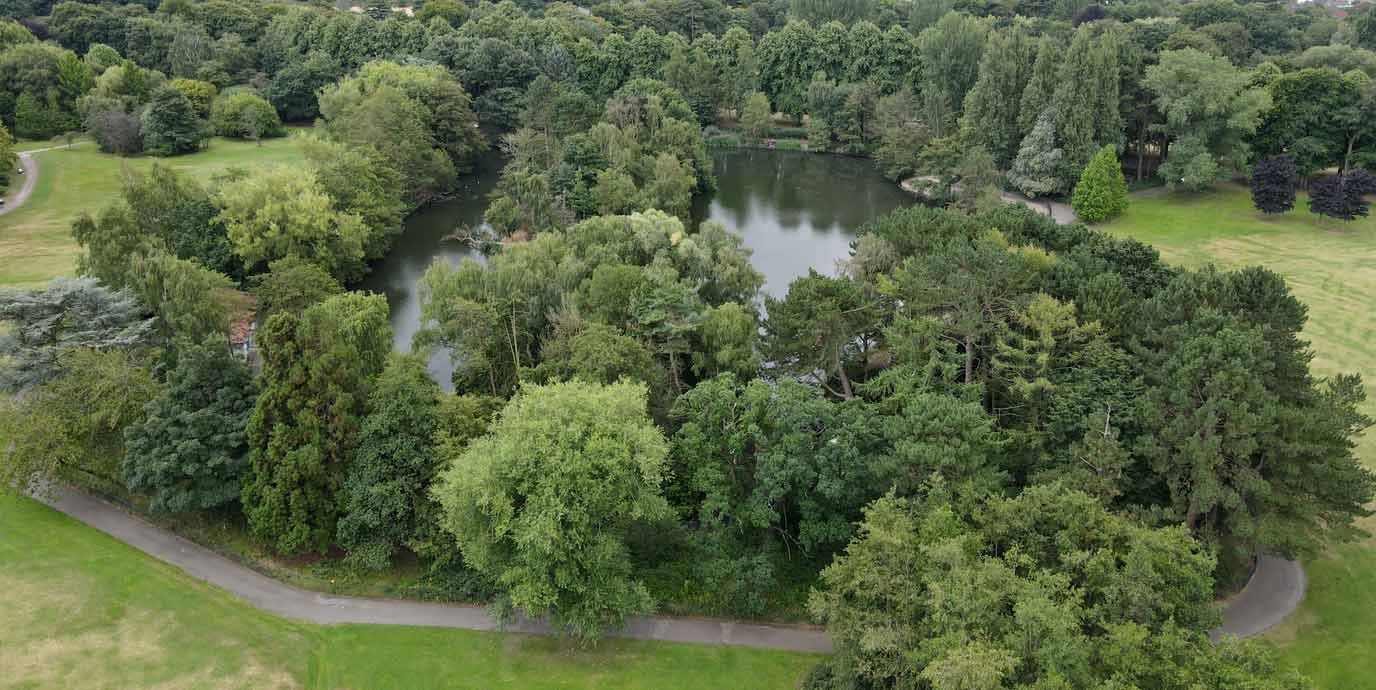
Nearest bus stop: Calderstones Road
Nearest train station: Mossley Hill or West Allerton
Set in the Allerton district of south Liverpool, the 126 acres of Calderstones Park offers a rich mix of natural beauty and historical intrigue.
The landscape includes woodland, open fields, and a lake frequented by ducks and geese, making it a popular destination for birdwatchers and nature lovers. You can explore a variety of walking paths that wind through Japanese and English gardens, and past ancient trees like the Allerton Oak, which estimated to be over 1,000 years old. The park also features botanical gardens and quiet corners ideal for reflection or leisurely strolls.
One of the park’s most remarkable features is the Calderstones, six Neolithic sandstone megaliths that date back over 4,000 years. These stones were originally part of a burial monument and are now preserved in a glasshouse within the park, allowing visitors to view their intricate carvings up close.
The Calderstones Mansion House, a Georgian-style building constructed in 1828, adds to the park’s historic charm and now serves as a community hub.
Sefton Park
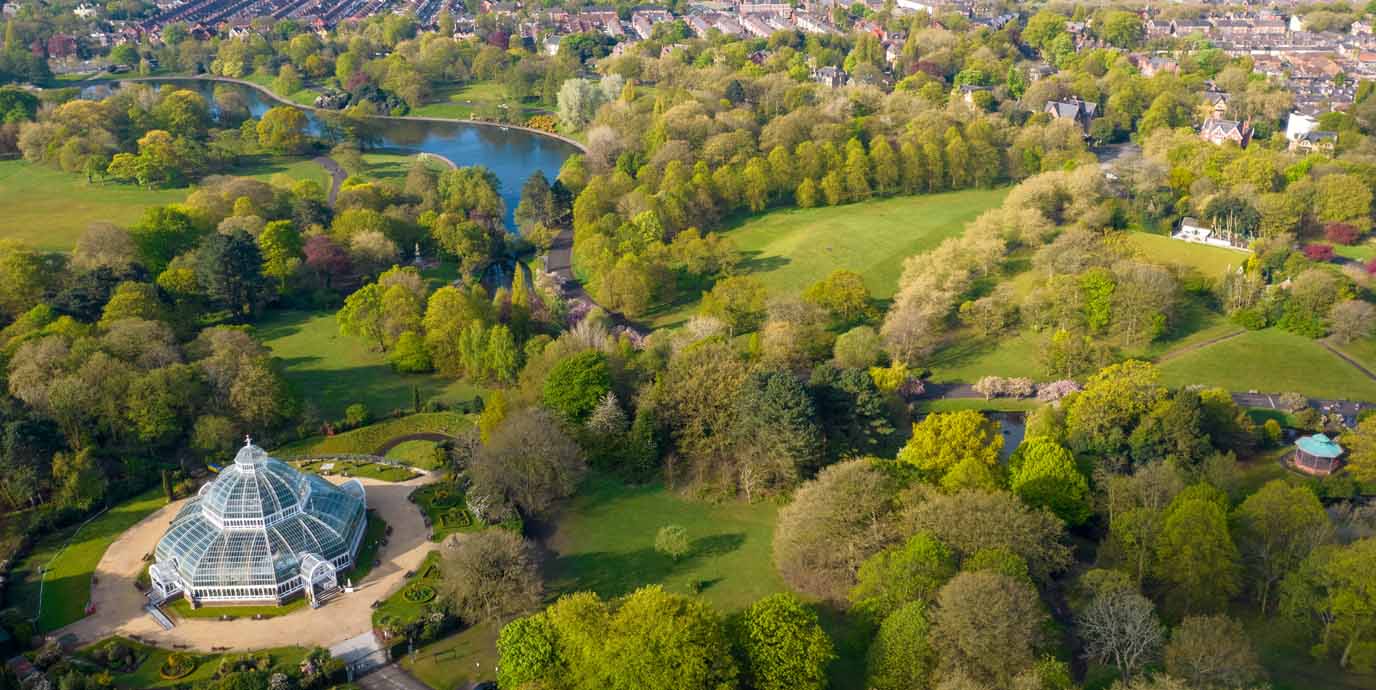
Nearest bus stop: Buckingham Avenue (North), Mossley Hill Drive (South)
Nearest train station: St Michaels
Spanning over 200 acres in south Liverpool, Grade I listed Sefton Park is one of the city’s most cherished green spaces.
Designed in the 19th century by French landscape architect Édouard André and Liverpool’s Lewis Hornblower, it was officially opened in 1872 as a public retreat for health and recreation. The park features a diverse landscape of woodland, open fields, and a large boating lake, all interconnected by a network of walking paths. One of the most picturesque areas is the Fairy Glen, known for its caves, waterfalls, and tranquil atmosphere. You can walk the park’s perimeter comfortably in under an hour, making it ideal for a lunch break stroll or a quick escape into nature.
A standout attraction is the Palm House, a restored Victorian glasshouse that hosts botanical displays and cultural events. Inside, visitors can admire exotic plants including orchids and palm trees, while the surrounding gardens offer peaceful spots for relaxation. Sculptures and monuments, such as the Eros Fountain and statues of historical figures, add artistic and historical depth to the park. Sefton Park also connects to the Trans Pennine Trail, offering extended walking and cycling opportunities.
Formby
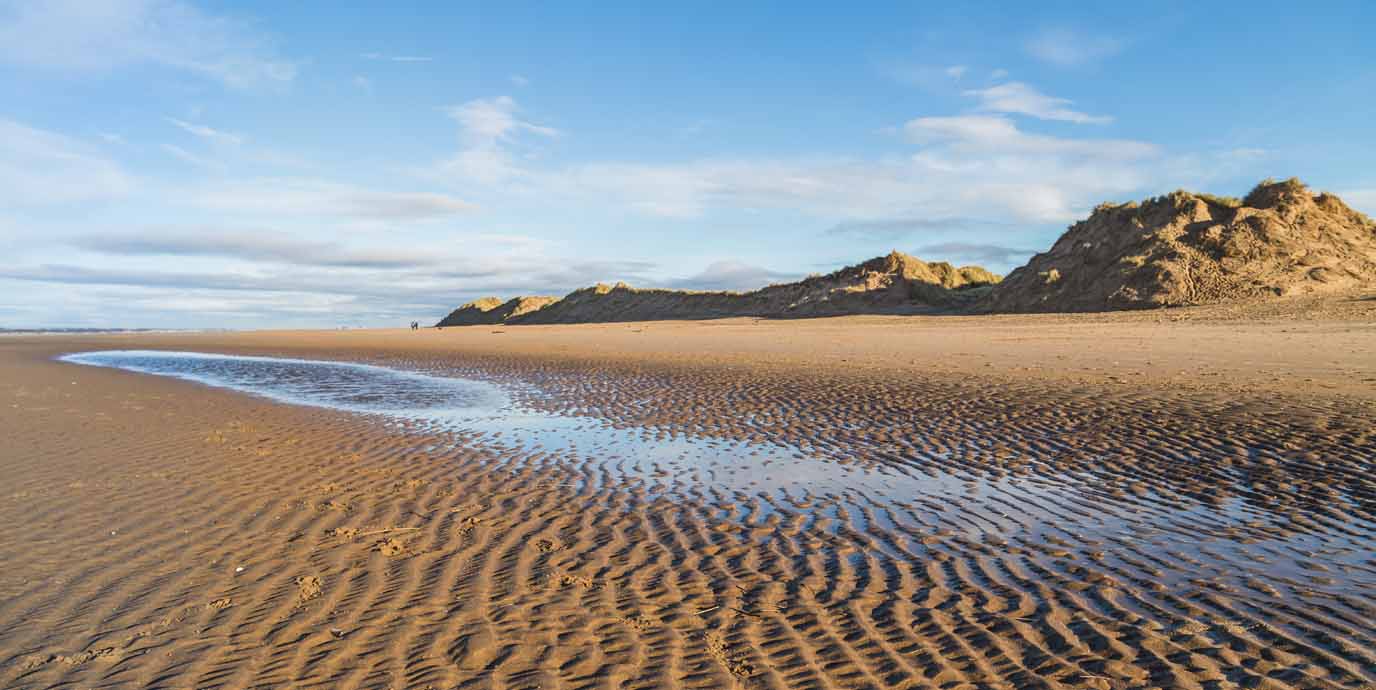
Nearest bus stop: St Lukes Church Road (Formby)
Nearest train station: Formby
Just north of Liverpool, Formby offers a striking blend of beach, sand dunes, and pine woodland.
Managed by the National Trust, the area is ideal for walking, with well-marked trails winding through forests and out to the shore. You can admire the beach for its dramatic dunes and wide, open sands. It’s perfect for birdwatching and spotting wildlife such as red squirrels and natterjack toads. The surrounding woodland, originally planted to protect the dunes, now supports a rich ecosystem and provides shaded walking routes.
The site is steeped in history, with prehistoric footprints, some dating back to 8000 BC, regularly uncovered in the shifting sands. These prints include those of humans, birds, and animals, offering a rare glimpse into ancient life along the coast. Two shipwrecks, the Ionic Star and the Bradda, lie buried in the beach, occasionally revealed by tidal movements.
While the Victoria Road beach car park is closed until spring 2026 for conservation work, Formby is easily accessible via public transport, with Formby train station just a short walk away.
Birkenhead Park
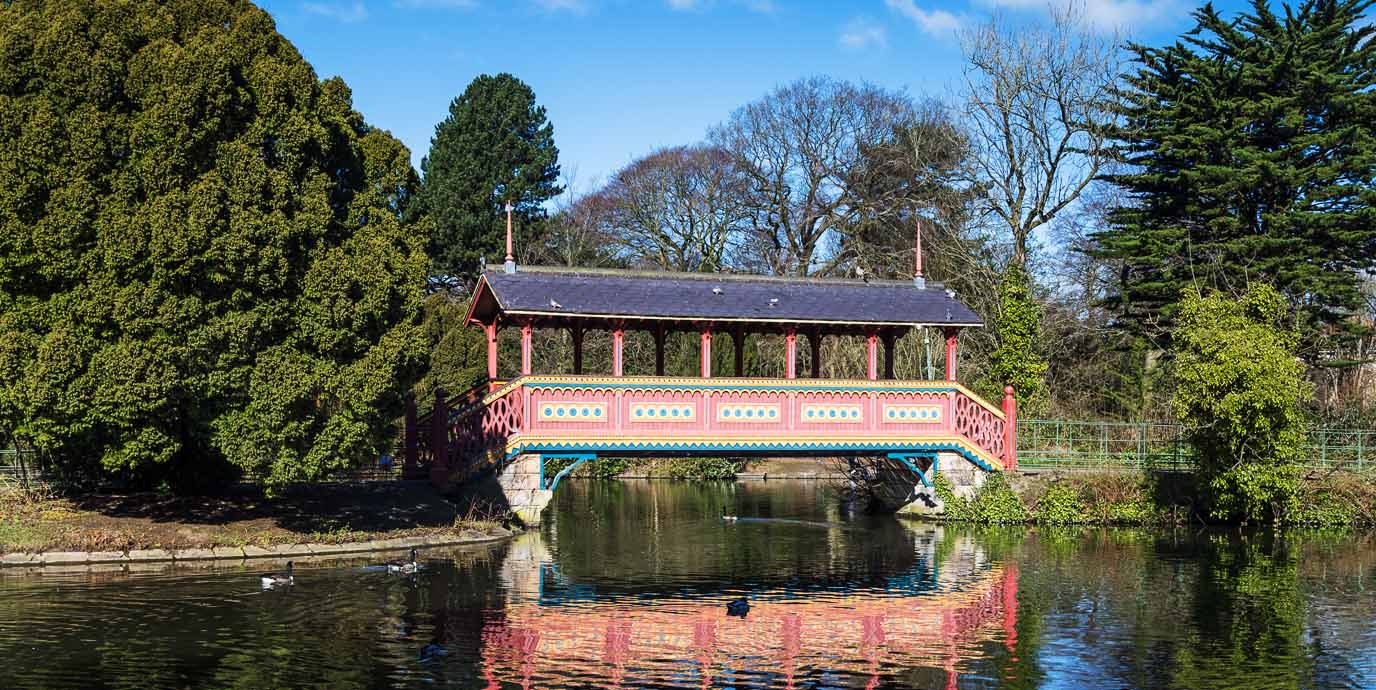
Nearest bus stop: Birkenhead Park Station (Stop E)
Nearest train station: Birkenhead Park
Just across the River Mersey and covering 140 acres in the Grade I listed landscape of Birkenhead Park is widely recognised as the world’s first publicly funded park.
Designed by Joseph Paxton and opened in 1847, it was created to provide green space for all social classes during the Industrial Revolution. Its influence is global, most notably inspiring the design of New York’s Central Park. The park features a carefully planned naturalistic layout with open meadows, lakes shaped like rivers, and belts of woodland. You can enjoy walking trails that weave through these varied landscapes, offering peaceful routes for both short strolls and longer walks.
Architectural highlights include the Swiss Bridge, the only covered wooden bridge of its kind in the UK, and the Roman Boathouse, which overlooks one of the park’s lakes. Several ornate bridges and lodges add to the park’s charm, while woodland areas provide habitat for birds and other wildlife. Restoration efforts in the early 2000s revitalised its historic features, ensuring it remains a vibrant space for recreation and nature appreciation.
Crosby Coastal Park & Beach
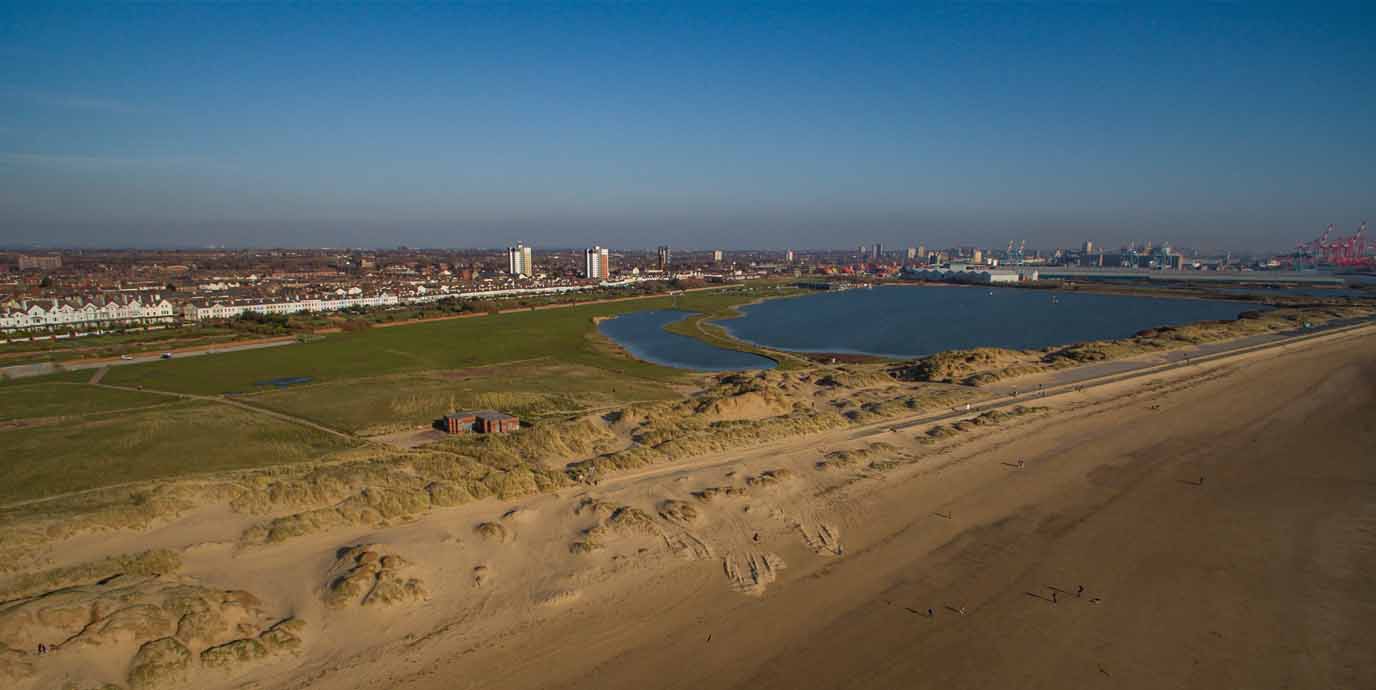
Nearest bus stop: South Road
Nearest train station: Waterloo
Stretching for four miles along Liverpool’s northern coastline, Crosby Coastal Park offers a dynamic mix of beach, dunes, and green space.
It forms part of the Sefton Coastal Park and is ideal for walking, with a promenade that runs from Waterloo to Hightown, offering panoramic views of the Irish Sea, the docks, and even North Wales on clear days. The Sefton Coastal Path passes through the area, connecting to other scenic spots like Formby and Ainsdale.
Birdwatchers will find plenty to enjoy here, especially around the dunes and wetlands, which attract waders, gulls, and migratory species. The Crosby Lakeside Adventure Centre, located within the park, provides opportunities for watersports on its purpose-built lake, including sailing, windsurfing, and kayaking.
The park is also home to Antony Gormley’s Another Place, 100 cast iron figures spread across the beach, facing out to sea. These sculptures add a surreal and contemplative element to the coastal landscape.
River Mersey & Hale Head Lighthouse
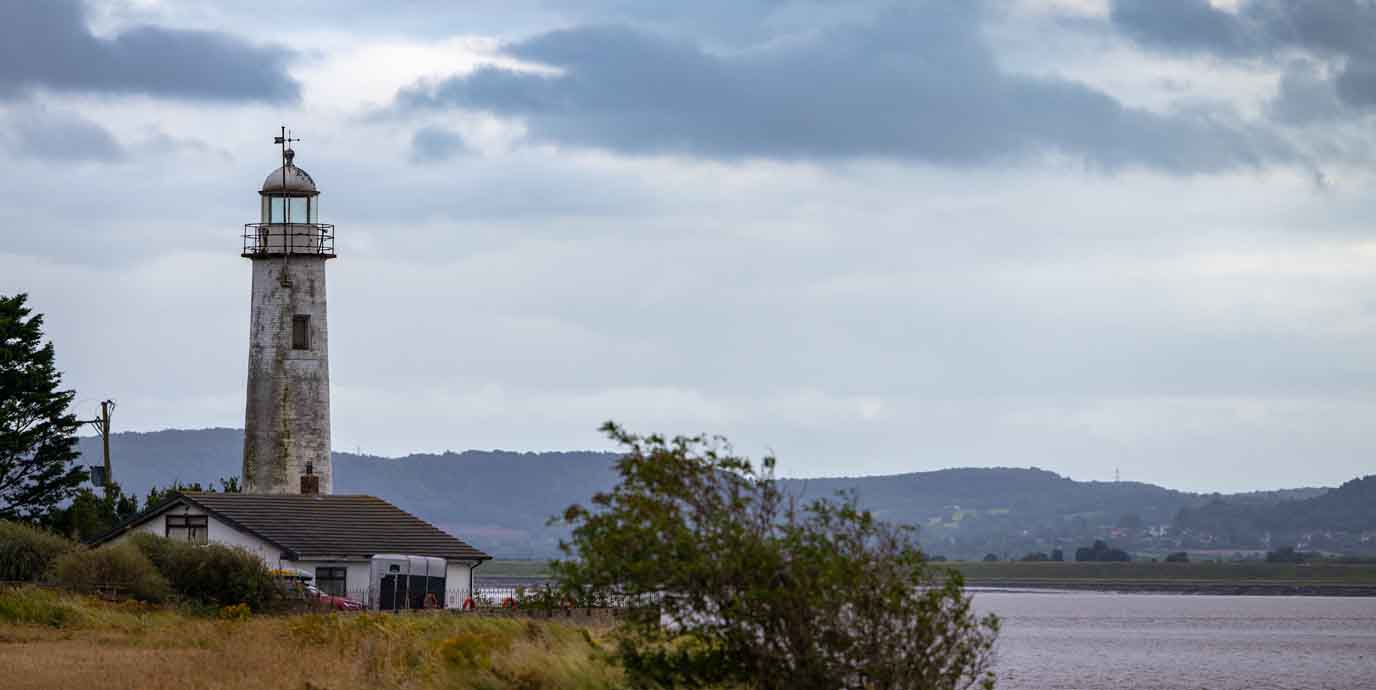
Nearest bus stop: Village Green (Hale)
Nearest train station: Hough Green (c. 5 miles)
A little way outside of Liverpool and set along the southern banks of the River Mersey, this scenic stretch near the village of Hale offers a peaceful and historically rich walking experience.
he route from Hale to Hale Head Lighthouse is popular with nature lovers and birdwatchers, with views across Dungeon Banks and Eastham Sands to Ellesmere Port. The walk passes through farmland, wildflower meadows, and saltmarsh, with benches along the way to enjoy the estuary’s changing tides and birdlife. The area is part of the Mersey Way and connects to longer trails like the Trans Pennine Trail, making it ideal for both short strolls and extended hikes.
The Hale Head Lighthouse, a white-painted 18-meter-high tower built in 1906, once marked the southernmost point of Lancashire. It replaced an earlier 1838 structure and was decommissioned in 1958 as shipping traffic declined. The lighthouse was briefly re-lit in 2022 to celebrate the Queen’s Platinum Jubilee and remains a Grade II listed landmark.
Stanley Park & Garden
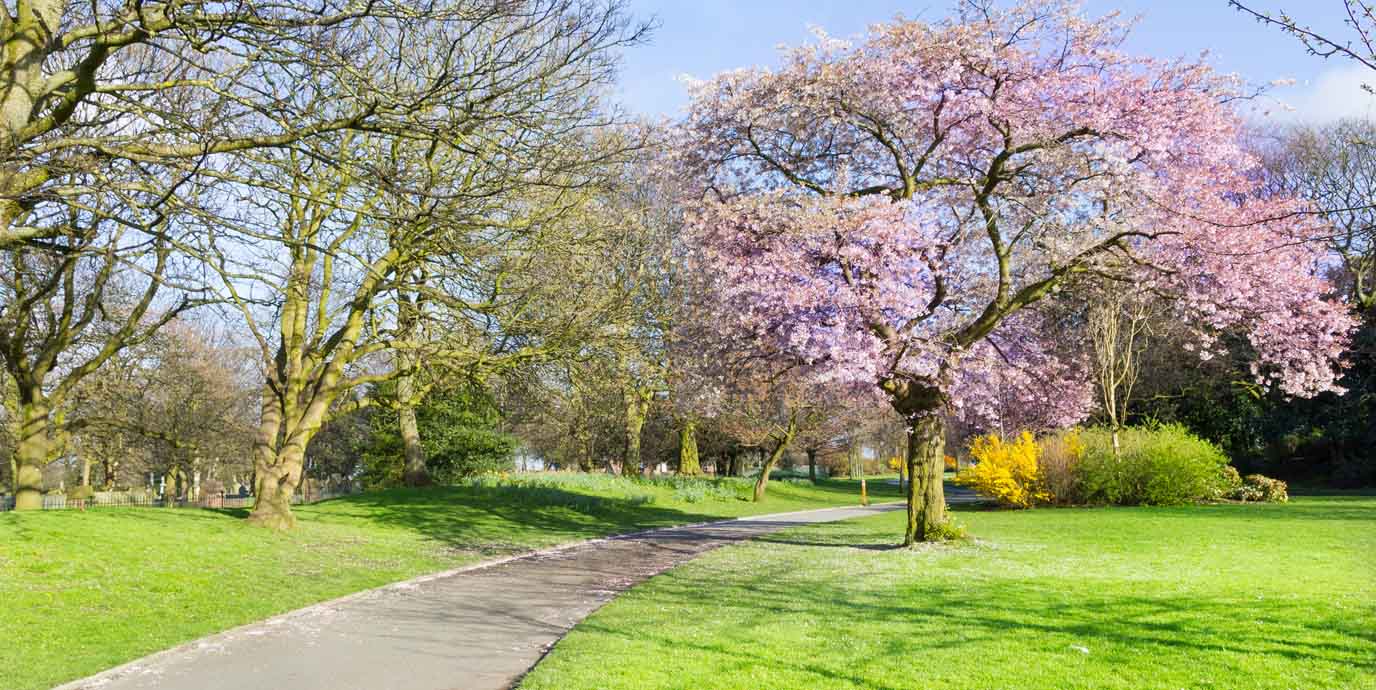
Nearest bus stop: Priory Road (South East), Newby Street (North West)
Nearest train station: Kirkdale
Located between Liverpool’s iconic football stadiums of Anfield and Goodison Park, the 111-acre green space of Stanley Park & Garden is a Grade II listed landscape.
Designed by Edward Kemp and opened in 1870, it was created to provide accessible recreation for the city’s working-class residents. The park features a mix of formal gardens, lakes, and open lawns, with walking trails that meander through woodland areas and past architectural highlights like the Isla Gladstone Conservatory, a restored Victorian glasshouse. Raised terraces offer scenic views across the park and surrounding Liverpool cityscape, making it a popular spot for both quiet strolls and community gatherings. Bridges, ornamental ponds, and tree-lined paths enhance the city walking experience, while the park’s layout reflects its original design intent.
Stanley Park is also known for its historic role in football culture, having once hosted early matches for Everton FC before the club moved to nearby Anfield. Today, the park serves as a symbolic divide between Liverpool’s two major football clubs and is often bustling with fans on match days.
North Wirral Coast & Hilbre Islands
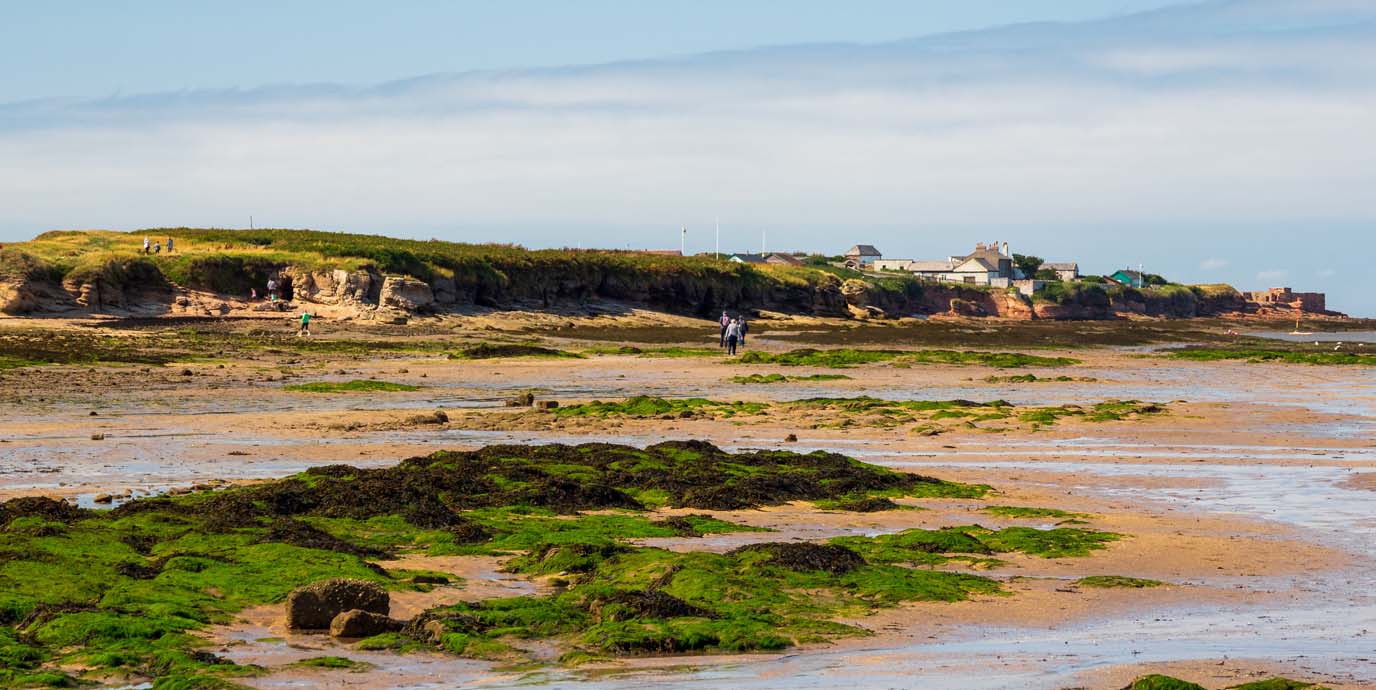
Nearest bus stop: West Kirby Station (Stop A)
Nearest train station: West Kirby
Just outside Liverpool and easily accessible via public transport (just 40 minutes from the centre of the city!), the Wirral Coast offers a dramatic and diverse landscape for walking and wildlife watching. The area forms part of the King Charles III Coast Path, includes the North Wirral Coastal Park and provides ample walking opportunity.
One of the highlights of the coast is the Hilbre Islands, a trio of tidal sandstone islets at the mouth of the Dee Estuary. These islands can be reached on foot from West Kirby at low tide, but it’s essential to check tide times and safety advice from the Friends of Hilbre before crossing. The walk across the sands is about 4 miles round trip and offers stunning views and opportunities to spot grey seals and migratory birds.
For those who prefer not to cross, the islands can be admired from the mainland, especially from the promenade and marine lake area. With Bronze Age and Viking-era archaeological finds, wartime history, and a bird observatory, the Hilbre Islands offer a unique blend of nature and heritage just beyond Liverpool.
Where can you find more nature walks in Liverpool?
There are plenty more places to explore in and around Liverpool for the perfect city walk. If you’re looking for further inspiration, consider planning a trip to a few lesser-known but unique green spaces such as:
- Festival Gardens – a riverside park in south Liverpool with restored Japanese gardens and woodland trails, originally created for the 1984 International Garden Festival.
- Everton Park – a hilltop green space with panoramic city views and walking trails, built on the site of former terraced streets cleared in the 1980s.
- Siding Lane – a peaceful woodland and grassland reserve near Rainford, ideal for birdwatching and walking, on the site of a former colliery.
- Childwall Woods – a 39-acre Local Nature Reserve with historic sandstone features and woodland trails, once part of the Childwall Hall estate.
- Otterspool Promenade – a riverside walkway opened in 1950, offering views over the Mersey and connecting to parks and gardens along the waterfront.
- Rimrose Valley Country Park – a 2.2-mile green corridor between Crosby and Litherland with wetlands, walking paths, and rich birdlife.
- Seaforth Nature Reserve – accessible by permit, a coastal bird sanctuary within Liverpool’s docks, known for its lagoons and rare migratory species.
Don’t forget to keep an eye out for Beatles attractions on your walks around the city, as there are plenty of locations (such as their childhood homes, Penny Lane and Strawberry Field) to take in for any music fans!
Do you want to go a little further than Liverpool for a walk?
Further beyond Liverpool, north west England has countless outdoor opportunities for those seeking their next adventure. If you’re looking to step from a city stroll into a countryside hike, prepare yourself and take a look at our suggestions of where to go:
- Peak District – a breath-taking national park of rolling hills, moorlands, and charming villages ideal for hiking and exploring.
- Forest of Bowland National Landscape – a designated Area of Outstanding Natural Beauty with gentle hills, quiet valleys, and peaceful walking trails.
- Clwydian Range & Dee Valley – a scenic area of hills and trails just outside Liverpool, perfect for walking and nature.
- Eryri (Snowdonia) – further afield, a mountainous national park in North Wales, known for rugged peaks, scenic trails, and rich Welsh heritage.
